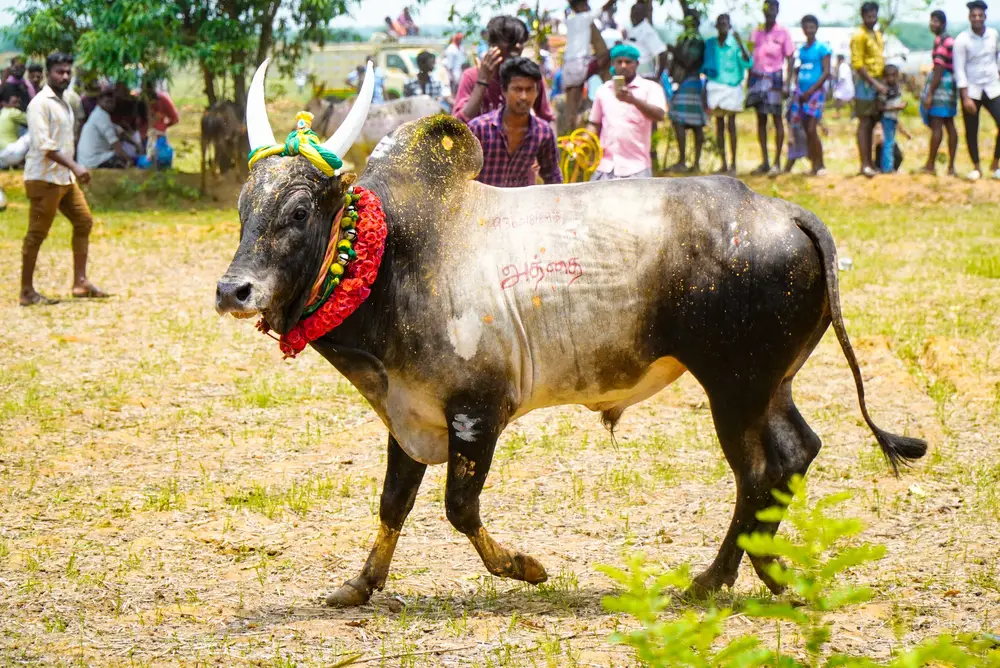The Corriente cattle breed are originally from Spain and were used as sport and rodeo cattle for most of their 500-year-long history. Today, there are more Corriente cattle in North America than in Europe as the breed underwent extensive development within the United States.
They are used primarily as a beef breed but are still one of the most popular sport cattle breeds in Canada, Mexico, India and the United States.
Table of Contents
Where Does Corriente Cattle Come From?
Corriente cattle are pure descendants of the original Spanish cattle that arrived in the New World in the late 15th century.
They are officially registered as Corriente cattle by the North American Corriente Association (NACA) and called Corriente cattle by ranchers in Northern Mexico, though they may be referred to as Chinampo, or Criollo cattle in South America.
Genetically they are close to Florida Cracker cattle, Texas Longhorn cattle, and Pineywoods, but they are smaller and more athletic than these breeds.
Their wide use in rodeos includes:
- Bulldogging (also known as steer wrestling)
- Team roping
- Riding.
They are known as agile and fast, with especially high endurance, and are easily trained.
While the Corriente breed is still used in rodeo circuits, they have shifted into a dual-purpose role with the assistance of breeding programs, and are now an established beef cattle breed in several countries.
Corriente beef is known to be tender. Even with older animals butchered at 3 or 4 years of age remain highly flavorful and desirable.
Corriente Cattle Breed Characteristics
| Official Breed Name | Corriente Cattle |
| Other Names | Criollo, Chinampo cattle |
| Scientific Name | Bos taurus |
| Origin | Spain |
| Appearance | They can appear in any color aside from white Red, chestnut and black are the most common colors They have dark black faces and legs A strong body with good conformation can be expected Wide-set, lyre shaped horns They have a clean dewlap, high withers, and a bushy tail |
| Calf Weight | 25lbs to 35lbs |
| Mature Cow Weight | 770lbs |
| Yearling Steer Weight | 400lbs |
| Mature Bull Weight | 1000lbs |
| Ready To Breed | 13 to 15 months |
| Gestation Period | 283 days |
| First Calvings | Around 2 years |
| Time to Slaughter | 6 to 9 months |
| Carcass Weight | 400lbs |
| Expected Lifespan | 15-20 years |
| Known For | Agility, athleticism, tender meat production, easy calving, temperament |
| Weaknesses | Difficult to keep in enclosures and confinement Require extensive pasture for foraging Next to no milk yields |
| Climate | Adaptable to all climates |

What Is So Special About Corriente Cattle?
Beef Production
Corriente cattle do an amazing job of foraging and have high feed conversion to muscle, which allows them to gain weight even in poor conditions. They have been compared with goats and will eat most vegetation, though they do not like to be fed corn or alfalfa.
Corriente beef has close to 50% less fat and lower cholesterol than most contemporary meat production breeds which makes it healthier than most other red meat.
The meat is tender, naturally marbled and juicy, with a unique flavor profile despite having less fat making it a perfect beef production breed.
Sport Breed
Corriente cattle make excellent sports cattle because:
- They are easily trained
- Are highly agile
- Have excellent strength and endurance
- Are excellent jumpers
- Generally are docile with humans
- Can be taught basic tricks
- Are highly intelligent.
This high intelligence coupled with their athleticism makes for difficulty keeping them in an enclosure, and they are well-known as escape artists. For this reason, it is good to keep an eye on these cattle or run the risk of having to corral them.
Why Should I Raise Corriente Cattle On My Farm?
- They eat far less feed and have excellent feed conversion increasing profitability
- Corriente cows exhibit high fertility, trouble-free birthing of calves and easily produce milk for their young
- Breeders prefer these “easy keepers” because of the ease of calving due to low calf birth weight
- They have overall low management requirements which is great for new farmers
- Heifers have early maturation, reaching puberty a few weeks sooner than other breeds.
- They do well in open-range environments and are excellent foragers
- They need less water than breeds of a similar size
- Natural resistance to parasites and diseases which saves money on vet bills and lowers loss
- Corriente cattle, unlike most modern beef cattle, have no known health issues or genetic issues
- Good starter cattle for new cattlemen as they are easy to tame with proper treatment
